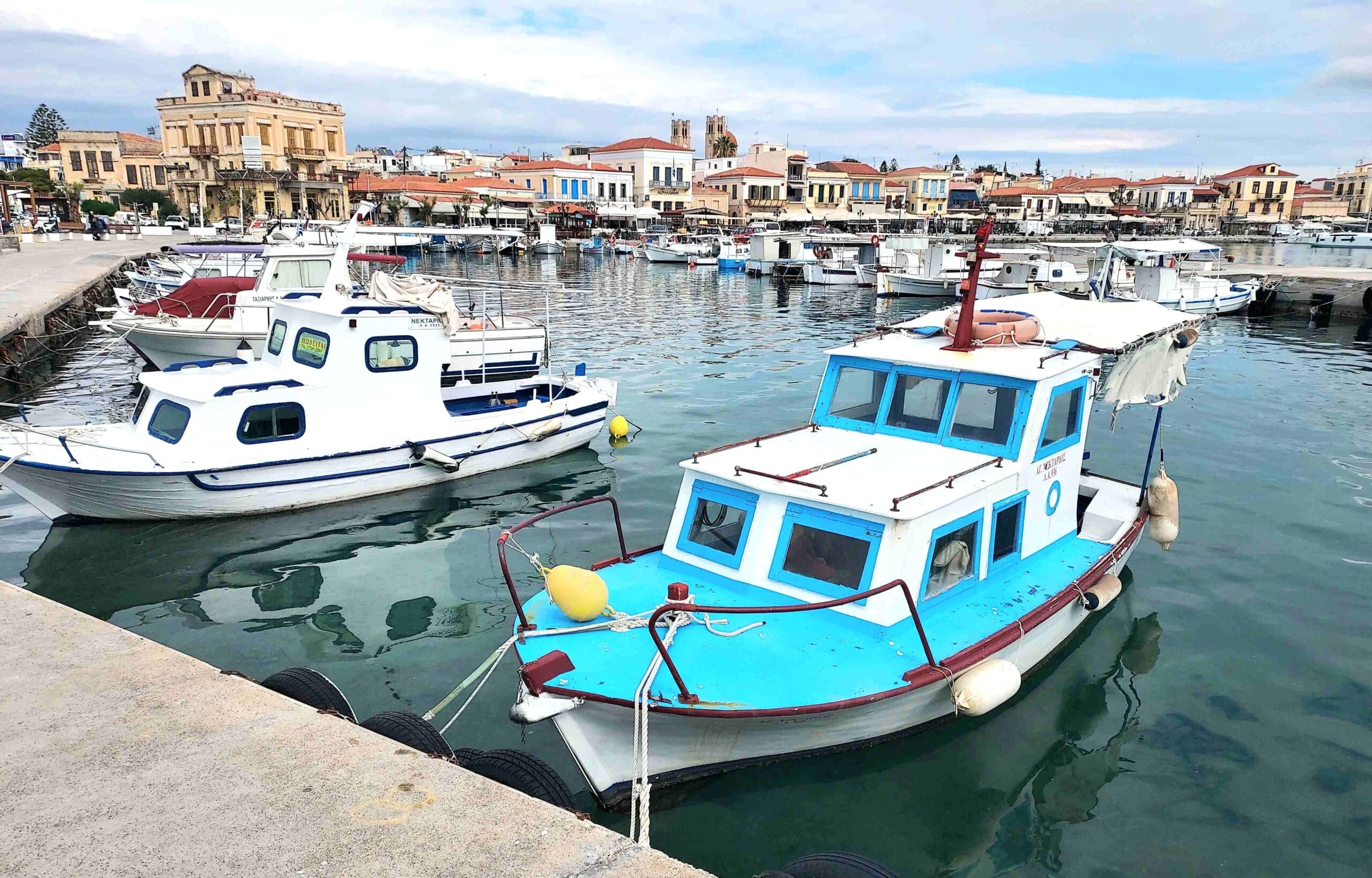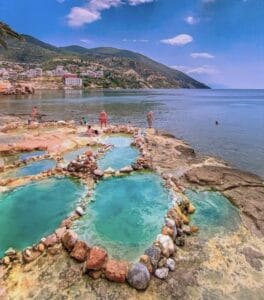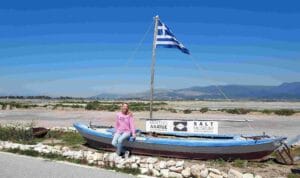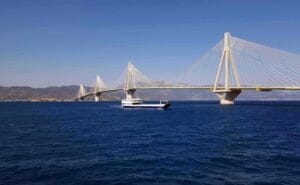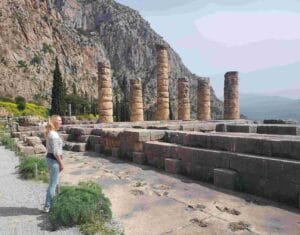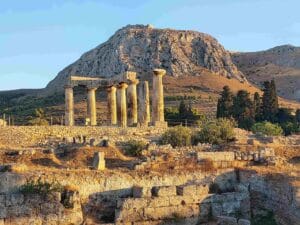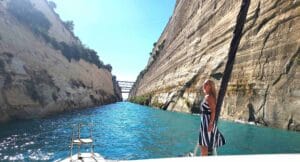After all our adventures in the Netherlands, the USA and Aruba, we’re back on the catamaran in Greece and happily sailing again! The catamaran had been docked in the same marina for quite some time due to all our work trips, but now we’re back on the move.
Let me take you along on our next sailing trip.
We had sailed north from Crete, crossed the Cyclades islands and reached the mainland near Athens. From the eastern town of Lavrio (Laurion), we had now entered the Saronic Gulf—a pleasant and familiar sailing area with beautiful islands and plenty to discover.
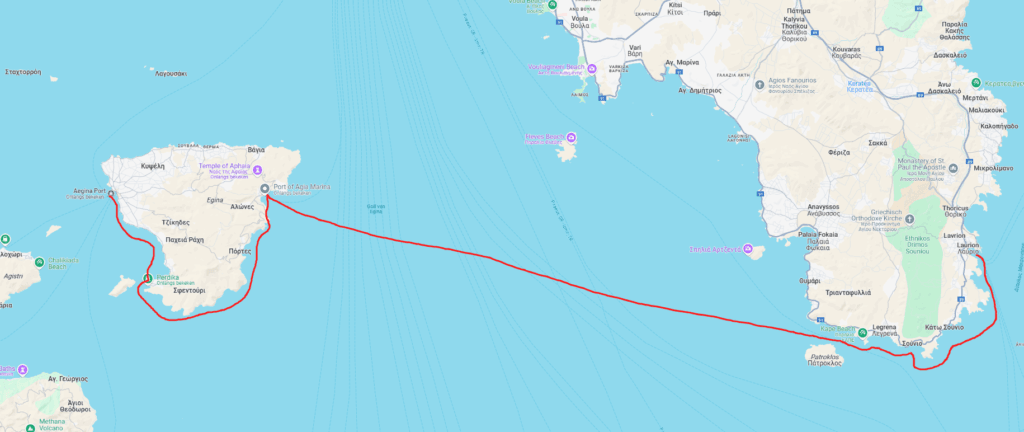
Egina
Our first journey in the Saronic Gulf was from Lavrio to the island of Aegina. The trip was 26 NM (nautical miles), which equals 46 kilometers (26 x 1.8 kilometer), and with an average speed of 5 knots (about 9 km/h), it took us around 5 hours to sail from Lavrio to the east coast of Aegina.
Temple of Sounion
Upon departure from Lavrio, we passed the Temple of Sounion, located at the southernmost tip below Lavrio. It’s an important temple that we had previously visited (by bike) during our stay in Lavrio.
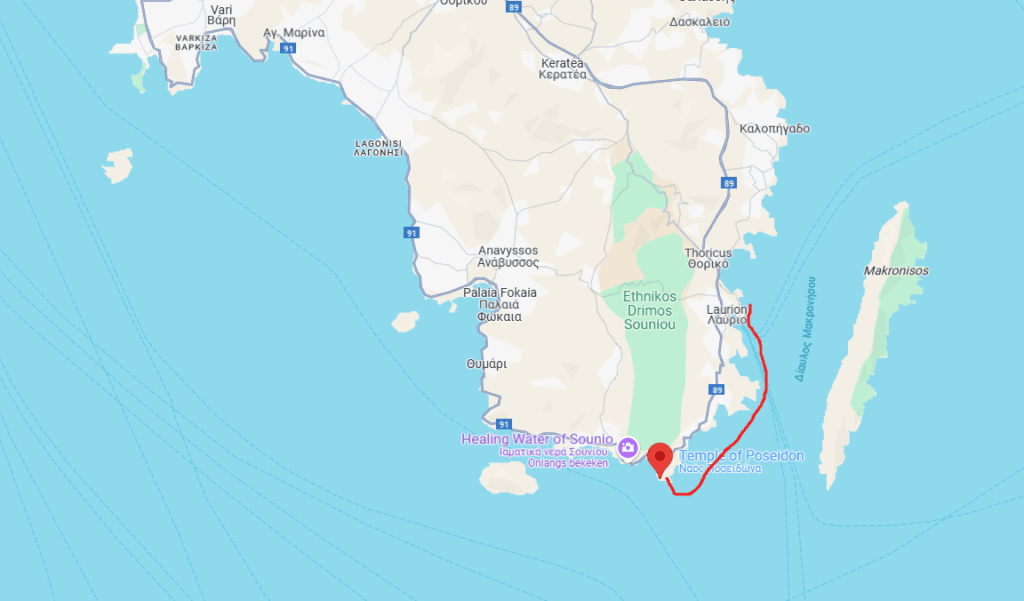
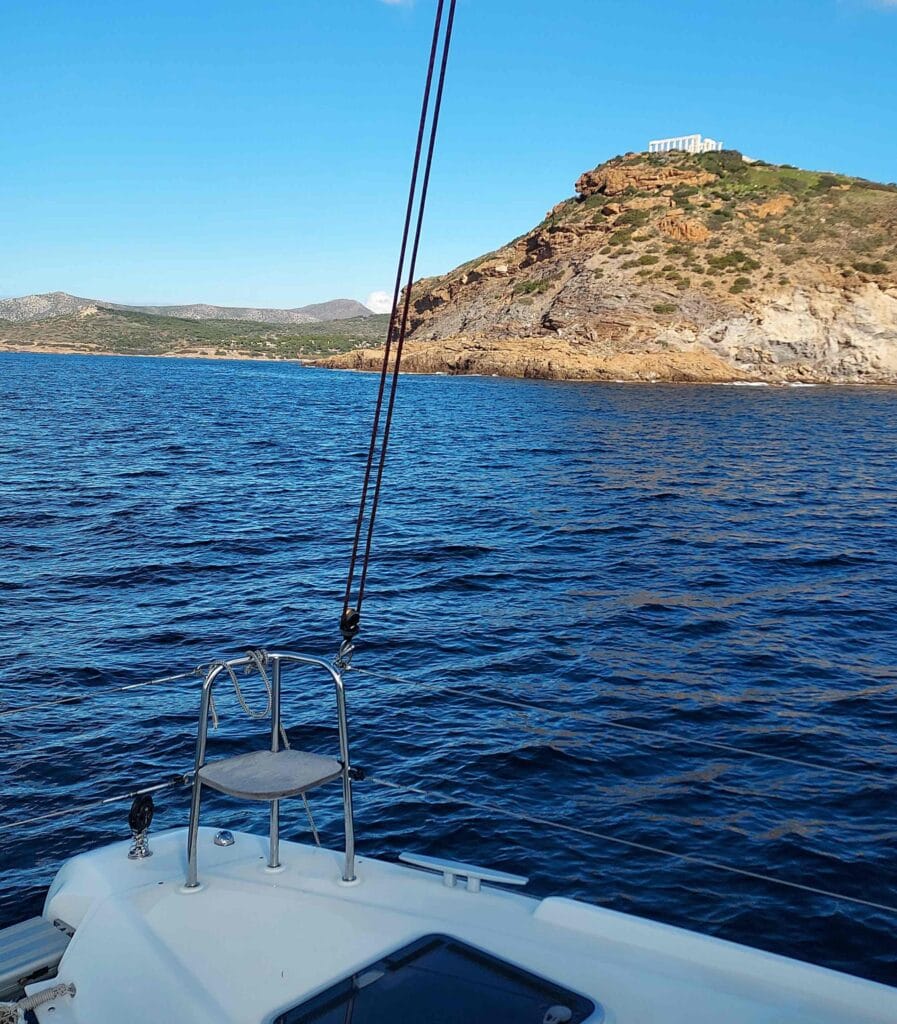
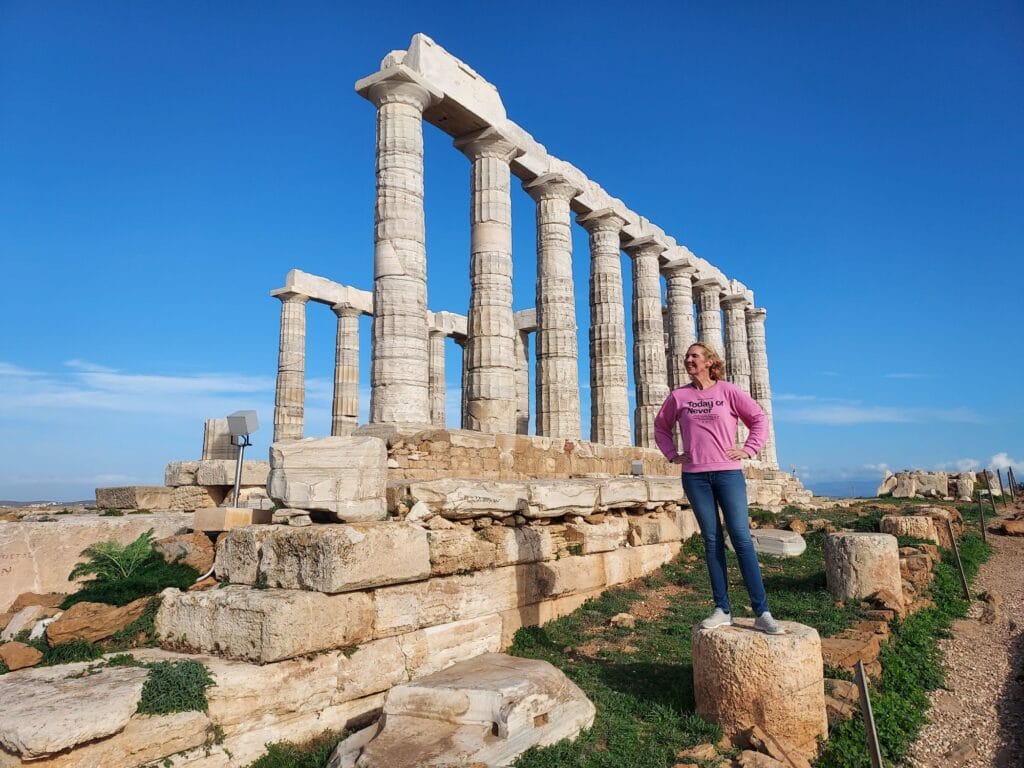
After 5 hours, we arrived on the east side of Aegina, in the town of Agia Marina, at the Port of Agia Marina. The name sounds grand, but it was actually a small, L-shaped harbor mostly filled with fishing boats.

Still, it was a lovely village, and what was really great: the Temple of Aphaia is located nearby!
Temple of Aphaia
The Temple of Aphaia is one of the best-preserved temples from Ancient Greece. This Doric temple, built around 500 BC, is dedicated to the local goddess Aphaia, who was only worshipped on Aegina. The location is spectacular—perched high on a forested hill, overlooking the sea and, on clear days, even offering views of both the Acropolis in Athens and the Temple of Poseidon at Sounion.
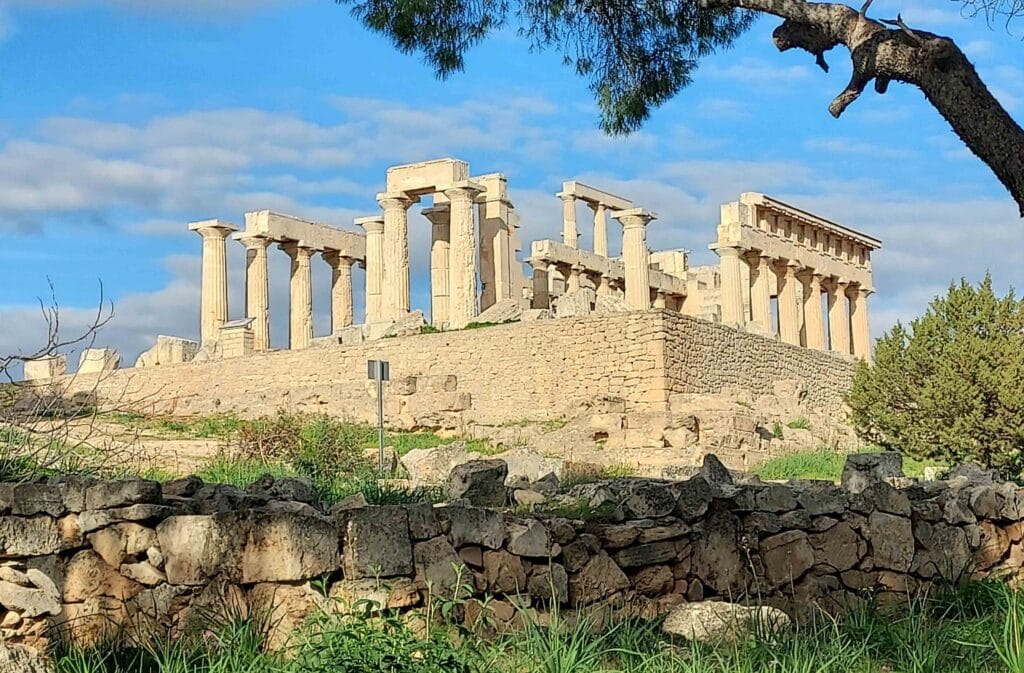
This completes the so-called “Sacred Triangle” of Greek temples. We had already visited the Acropolis and the Temple of Sounion, so we now understood that these were the three most important temples in this region—and that they were interconnected.
The “Sacred Triangle” of Greek temples is not an official or religiously recognized concept from antiquity, but rather a modern term often used by art historians, archaeologists and travel guides to describe the symbolic and geographical connection between three major temples in the Attica region and the Saronic Gulf:
- The Temple of Aphaia on the island of Aegina, dedicated to the local goddess Aphaia
- The Parthenon / Acropolis of Athens, dedicated to Athena, the city’s patron goddess
- The Temple of Poseidon at Cape Sounion, dedicated to the god of the sea
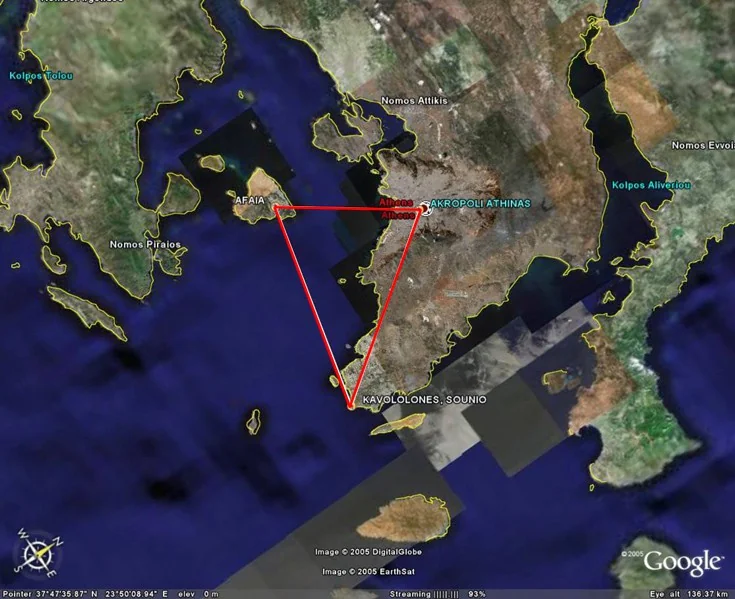
What does the “Sacred Triangle” represent?
- Visual triangle: On clear days, you can see at least one of the other temples from each of the three locations—creating a visual and symbolic triangle.
- Religious-symbolic meaning: Each temple represents an important deity (Aphaia, Athena and Poseidon), suggesting a balance between land (Athena), sea (Poseidon), and a mysterious local female deity (Aphaia).
- Geographic pattern: When connected on a map, the three sites form roughly an equilateral triangle, which some consider to have spiritual or esoteric significance.
Perdika
We departed from the Port of Agia Marina and sailed to the village of Perdika on the island of Aegina. To get there, you need to sail around the southern tip of the island, and Perdika is located in the southwest corner.
As we entered the harbor, we immediately found it charming!
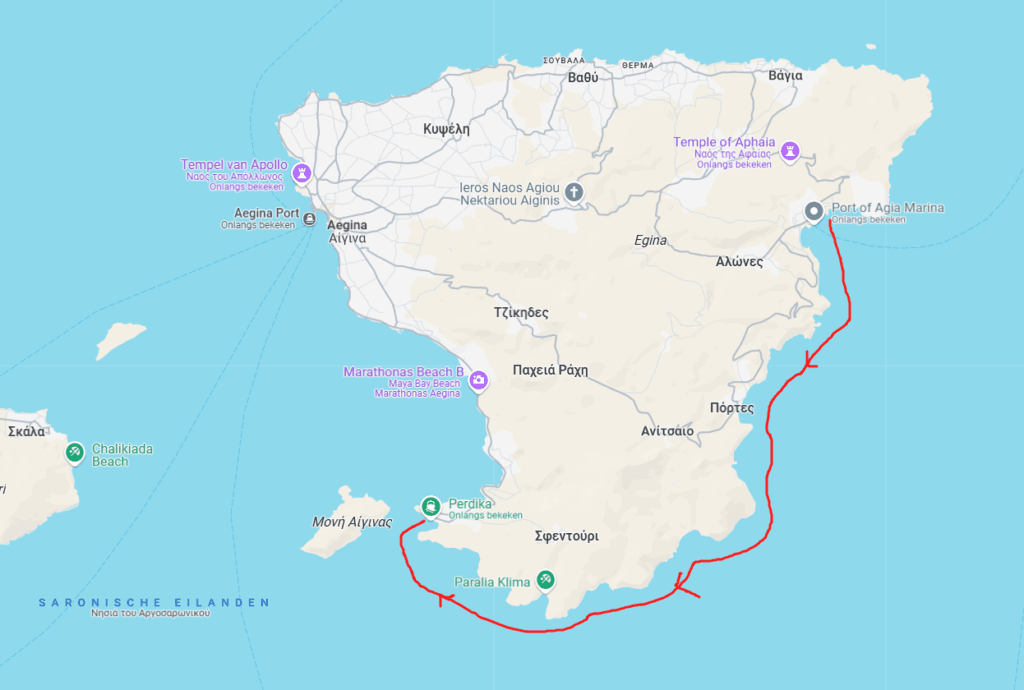
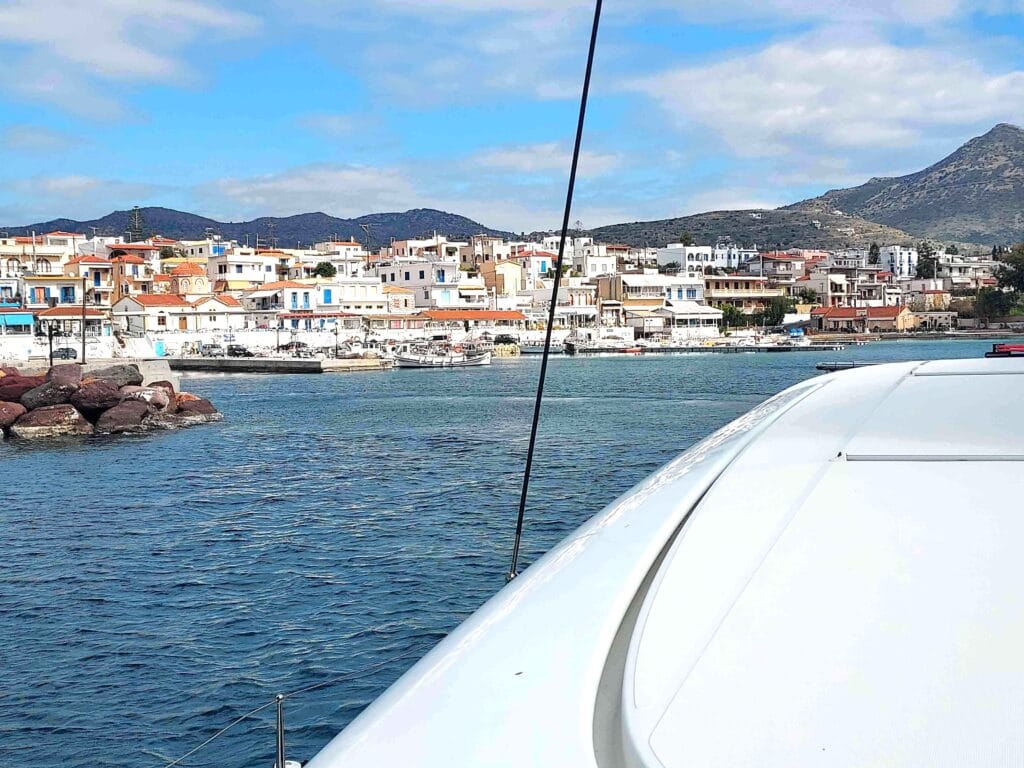
The whitewashed houses stood out, and the boulevard was lined with tavernas serving fresh fish directly from the sea, judging by all the fishing boats at the docks. To me, this village had really preserved its authentic character.
From the harbor quay, you can see the uninhabited islet of Moni—a nature reserve only accessible by boat. It is said that peacocks, fallow deer and wild goats live there.
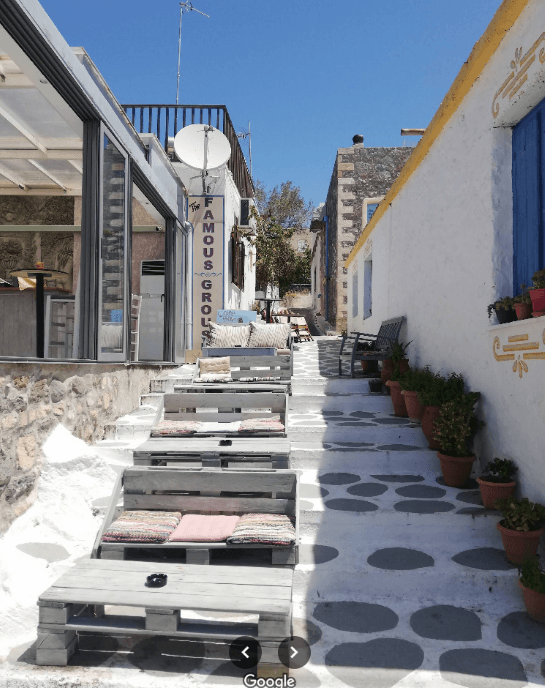

We liked it so much here and had such nice chats with some of the restaurant owners along the boulevard—they were very relaxed—that we decided to launch our drone to capture this lovely spot and the harbor from the air.
Aegina Town
We discovered there was a beautiful cycling route along the west coast heading north to the capital, Aegina Town, named after the island itself.
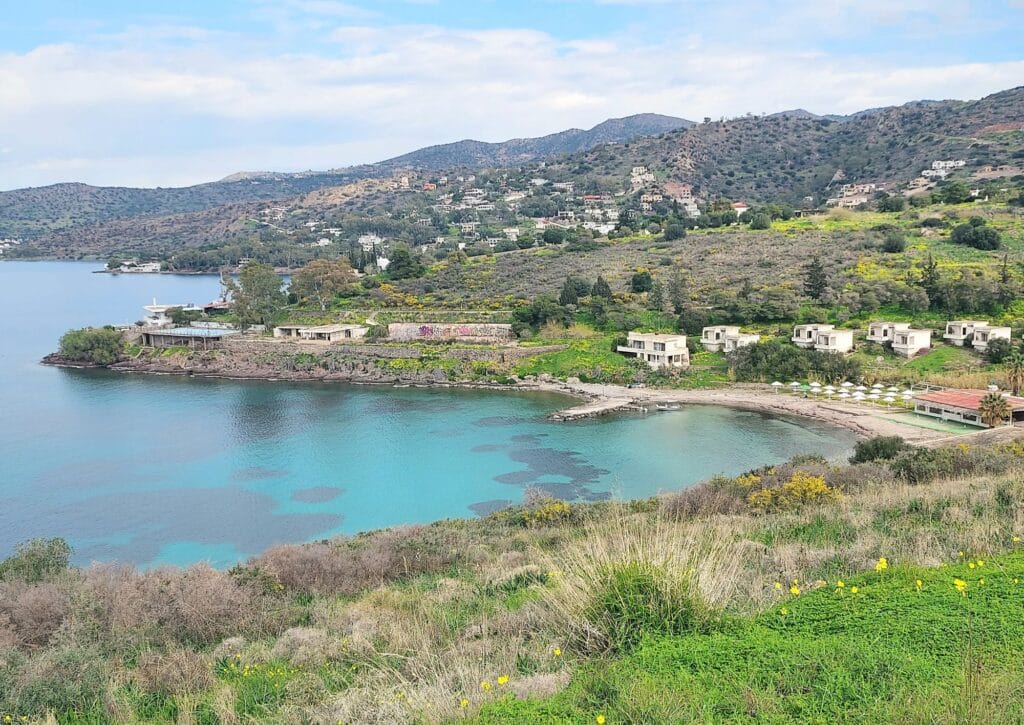
The fact that the route followed the coastline was a big motivator for us—because we’ve had plenty of experiences in Greece where we set off on our bikes only to find ourselves climbing a 1,200-meter mountain 😉. In those cases, we usually had to change plans and find a spot that was a bit more accessible. Even with an e-bike and e-scooter, really steep and long uphill climbs just aren’t doable.
When we arrived in the lovely town of Aegina, we were immediately struck by the impressive neoclassical buildings and the spacious, welcoming squares. This stately town was even, briefly in 1828, the first capital of modern Greece.
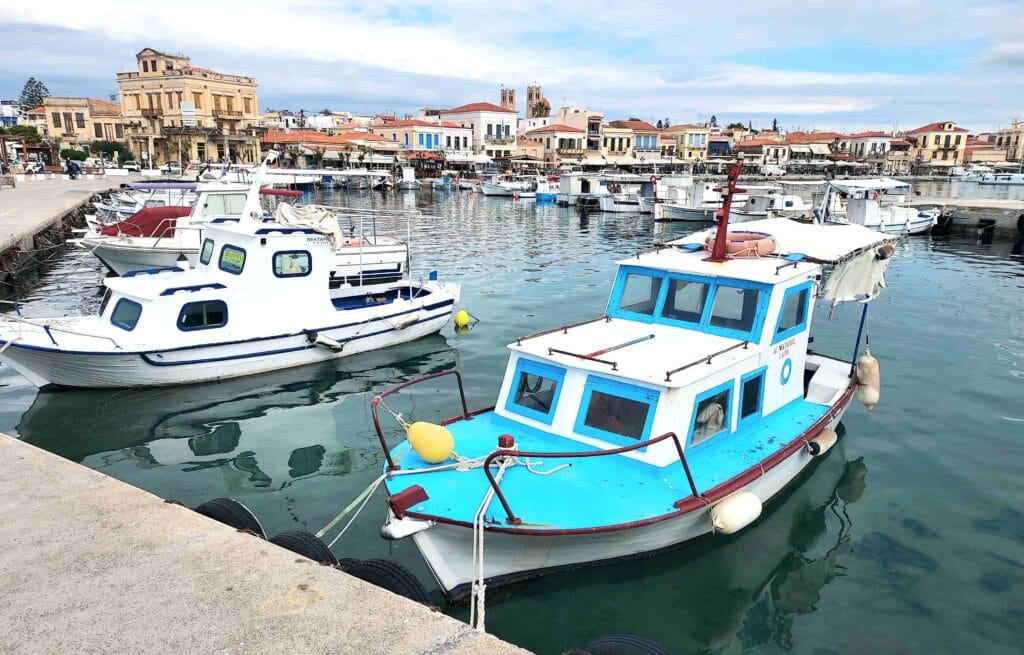
And of course, you can’t miss the pistachios—Aegina is famous for them. Pistachio trees only arrived on the island around 1896, introduced by a local farmer named Nikolaos Peroglou. He brought pistachio seeds from Syria or Iran and started experimenting with growing them on Aegina. The first trees yielded results quickly, and by the 1920s, more farmers began planting pistachio orchards. The dry summers, mild winters, and well-draining, chalky soil on Aegina are ideal for cultivation.
All over town, you’ll find stalls selling pistachio products: from roasted nuts to pistachio paste and liqueur. We chose a pistachio ice cream—and it was delicious! Rich in flavor and practically a whole meal in itself.
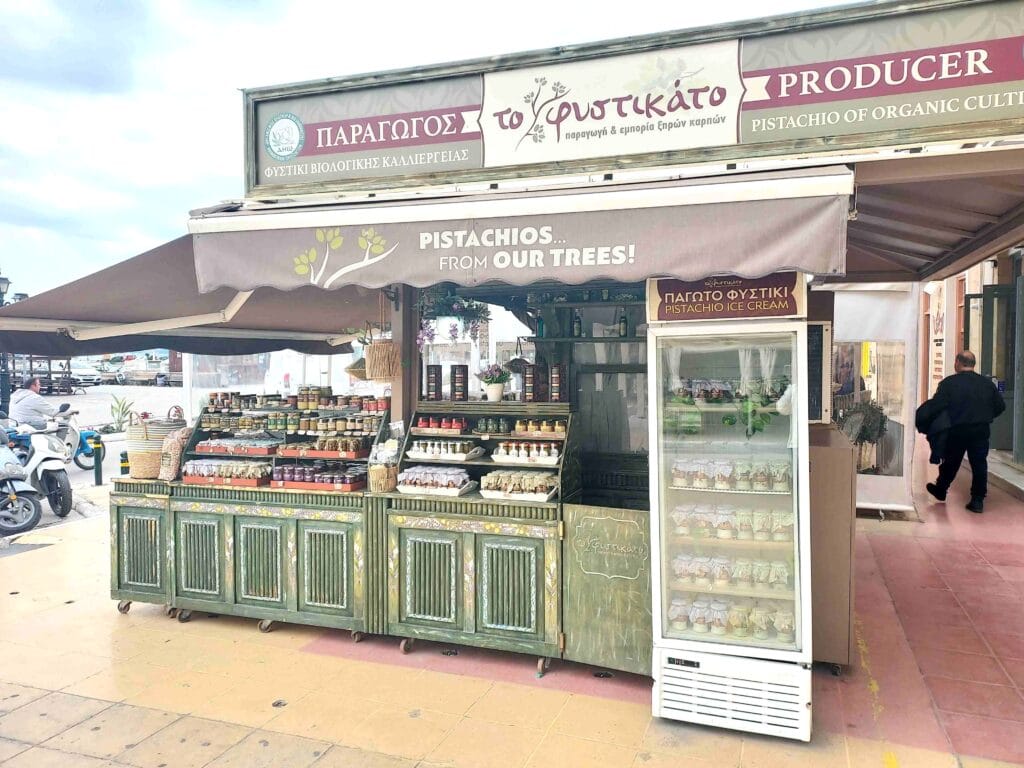
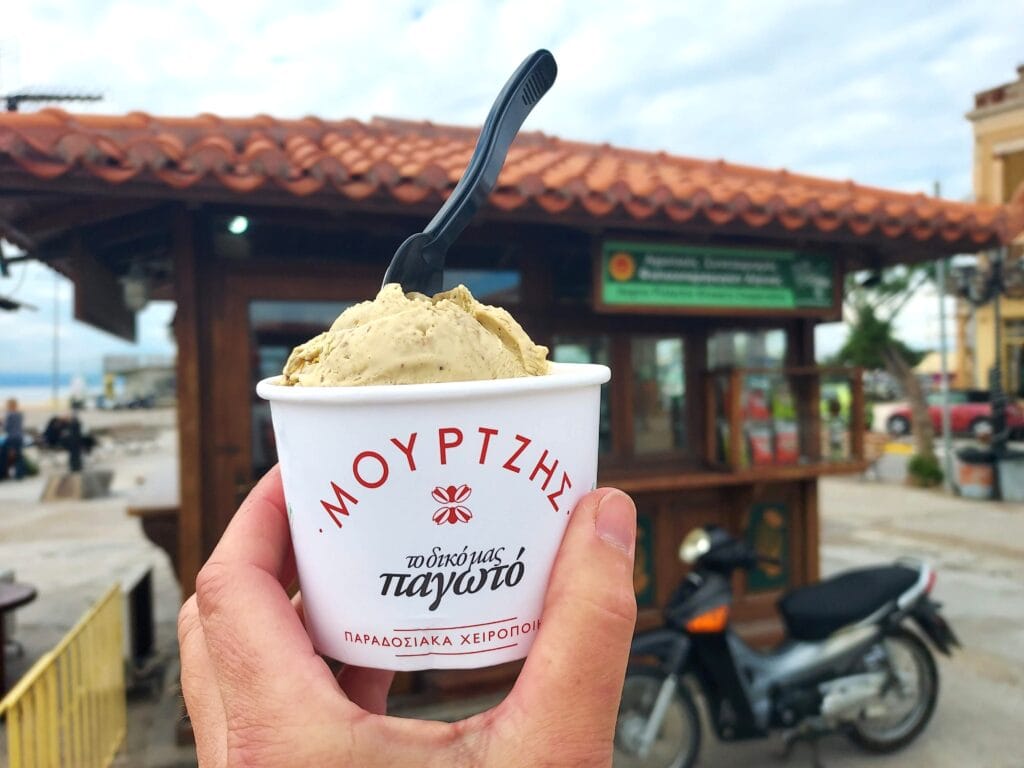
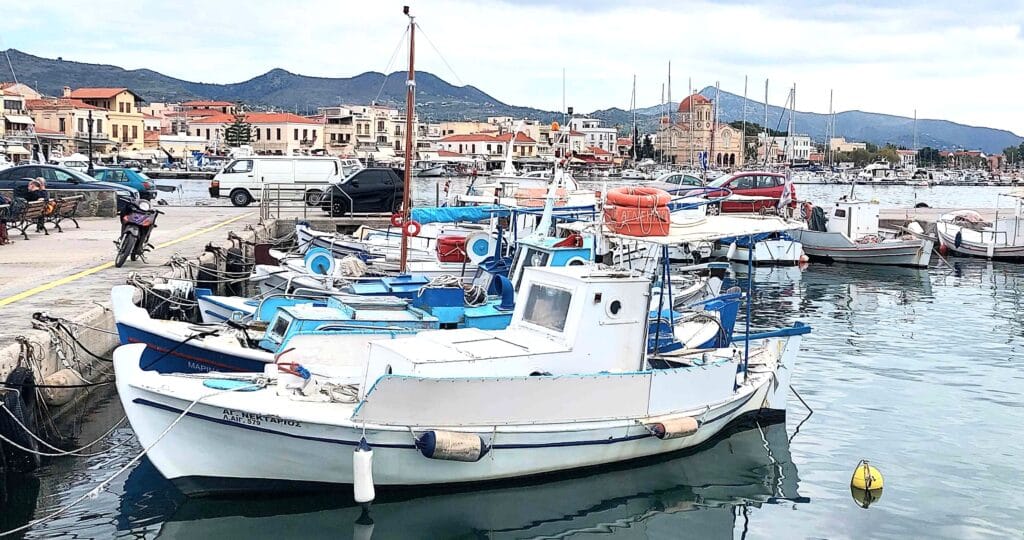
Looking one more time to the beautiful harbor of Egina town,, we got on our bikea again and satisfied, we returned to Perdika harbor, where we stayed one more day.
We really liked this island and were already curious about the next well-known island in the Saronic Gulf: Poros.
